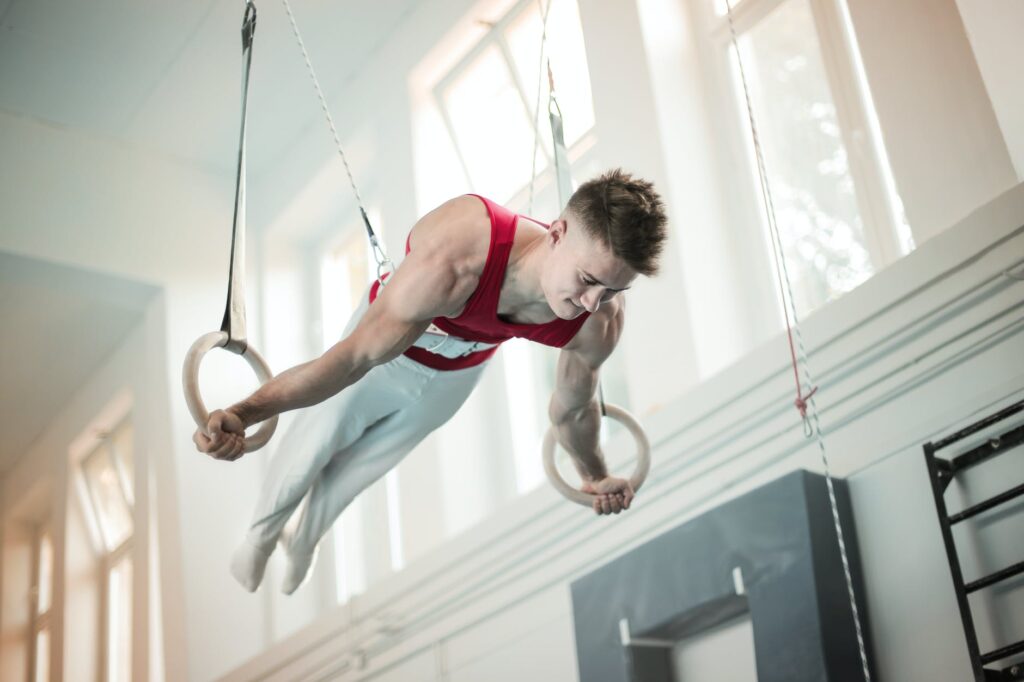
Gymnastics is a sport that is enjoyed by both men and women around the world. While the sport is similar in many ways, there are some key differences between men’s and women’s gymnastics. In this article, we’ll explore the differences between the two disciplines and why they are important.
First, let’s look at the equipment used in men’s and women’s gymnastics. Men’s gymnastics typically uses more apparatus than women’s gymnastics. Men’s events include the floor, pommel horse, rings, vault, parallel bars, and high bar. Women’s events include the vault, uneven bars, balance beam, and floor exercise.
Second, let’s look at the skills used in men’s and women’s gymnastics. Men’s gymnastics focuses more on strength and power, while women’s gymnastics focuses more on grace and flexibility. Men’s gymnastics also requires more complex skills, such as flips and twists, while women’s gymnastics focuses more on balance and coordination.
Finally, let’s look at the scoring system used in men’s and women’s gymnastics. Men’s gymnastics is scored on a 10-point scale, while women’s gymnastics is scored on a 10.0-point scale. This difference is important because it allows judges to more accurately score the difficulty of the skills being performed.
Overall, men’s and women’s gymnastics are similar in many ways, but there are some key differences that make them unique. From the equipment used to the skills performed and the scoring system, men’s and women’s gymnastics are two distinct disciplines that require different approaches.
Gymnastics is a sport that requires strength, flexibility, and skill. It is a popular activity for both children and adults, and there are many different types of gymnastics to choose from. Artistic, rhythmic, and trampoline gymnastics are three of the most popular forms of the sport. Each type of gymnastics has its own unique set of skills and challenges, so let’s take a closer look at what makes them different.
Artistic gymnastics is the most well-known type of gymnastics. It is the type of gymnastics seen in the Olympics and other major competitions. It involves performing a series of complex and difficult skills on the floor, beam, rings, vault, and parallel bars. It requires strength, flexibility, and coordination, as well as a great deal of practice and dedication.
Rhythmic gymnastics is a type of gymnastics that combines elements of dance and gymnastics. It involves performing a series of choreographed routines with a variety of apparatus, such as ribbons, hoops, balls, and clubs. It requires grace, flexibility, and coordination, as well as a great deal of practice and dedication.
Trampoline gymnastics is a type of gymnastics that involves performing a series of jumps and flips on a trampoline. It requires strength, flexibility, and coordination, as well as a great deal of practice and dedication. It is a popular activity for both children and adults, and it can be a great way to get fit and have fun.
No matter which type of gymnastics you choose, you can be sure that it will be a challenging and rewarding experience. Each type of gymnastics has its own unique set of skills and challenges, so it’s important to find the one that best suits your interests and abilities. With dedication and practice, you can become a master of any type of gymnastics.
Acrobatic and tumbling gymnastics is a unique and exciting sport that combines elements of acrobatics, tumbling, and dance. It is a fast-paced and dynamic sport that requires strength, flexibility, and agility. While it is a thrilling sport to watch, it also presents some unique challenges for athletes.
One of the biggest challenges of acrobatic and tumbling gymnastics is the need for precise timing and coordination. This sport requires athletes to perform complex skills in unison with their teammates. This means that athletes must be able to anticipate their teammates’ movements and adjust their own accordingly. This can be difficult to master, but it is essential for successful performances.
Another challenge of acrobatic and tumbling gymnastics is the need for strength and power. This sport requires athletes to perform skills with great force and speed. This means that athletes must have the strength and power to perform these skills safely and effectively. This can be difficult to develop, but it is essential for successful performances.
Finally, acrobatic and tumbling gymnastics requires athletes to have a high level of flexibility. This sport requires athletes to perform skills with a wide range of motion. This means that athletes must be able to move their bodies in ways that are not typically seen in other sports. This can be difficult to master, but it is essential for successful performances.
Acrobatic and tumbling gymnastics is a thrilling sport that requires athletes to have a unique combination of strength, power, flexibility, and coordination. While it can be challenging to master these skills, it is also incredibly rewarding. With dedication and hard work, athletes can become successful in this exciting sport.